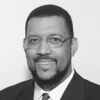There appears to be an increasing recognition that being competitive in the new economy means increased investment in research, innovation, and human capital. We also must align our human capital to meet the increasing skill demands of the knowledge economy.
However, as we move ahead into a new century with new economic challenges, we’ve inherited a culture, educational system, and workforce talent pool based upon the realities of a bygone era. As a result, we face what Edward Gordon, author of The 2010 Meltdown: Solving the Impending Jobs Crisis, calls “a great people paradox.” He explains: “On one hand, we have too many untrained people or people trained for the wrong jobs. On the other hand, we will increasingly lack enough people to fill the jobs that support the world’s leading high-tech economies.”
A similar paradox lies in the reality that the world is undergoing an economic transformation. The traditional manufacturing economy of the 20th century, in which America thrived, has resulted in the loss of millions of manufacturing jobs to new technologies, productivity gains, and outsourcing low-skilled operations to other countries. While U.S. manufacturers have laid off millions of low-skilled workers, they can’t find enough highly skilled workers to fill current and projected openings in advanced manufacturing, engineering, and logistics.
How do we find ourselves in this situation? The answer is over the last century, we developed a system of education and human capital development that reflected the needs of a bygone manufacturing-based economy where only a fraction of the workforce needed to be highly skilled. Today we’ve inherited that legacy.
We created an educational system that assumed only about one in four students needed to be educated with higher skills and abilities. It was acceptable for 25 to 50 percent of students to drop out of high school, depending on where they lived. The remaining 25 to 50 percent could graduate from high school with basic literacy skills and, in some cases, additional vocational training or post-high school education. The 20th century mass production manufacturing economy was able thrive on this balance of human capital.
Ironically, the current make up of our human capital reflects these assumptions and systemic predispositions. About 20 to 25 percent of our workforce have advanced education and commensurate skills. Another 30 percent have basic educational skills and can read at the 10th grade level. The remaining 40 to 50 percent are semi-literate, unskilled, and are at risk of becoming obsolete in an increasingly competitive knowledge-based global economy.
To compound this dilemma, other countries around the world have figured out what it takes to be successful in this new 21st century knowledge economy. Global competitors are producing more engineers, scientists, and knowledge technologists; American children are falling behind children of other countries in basic skills achievement. As a result, multi-national corporations are turning to the global talent pool to address their growing need for knowledge workers. Serious choices and painful changes are ahead for our society as we seek to compete in the new economy. IBI

